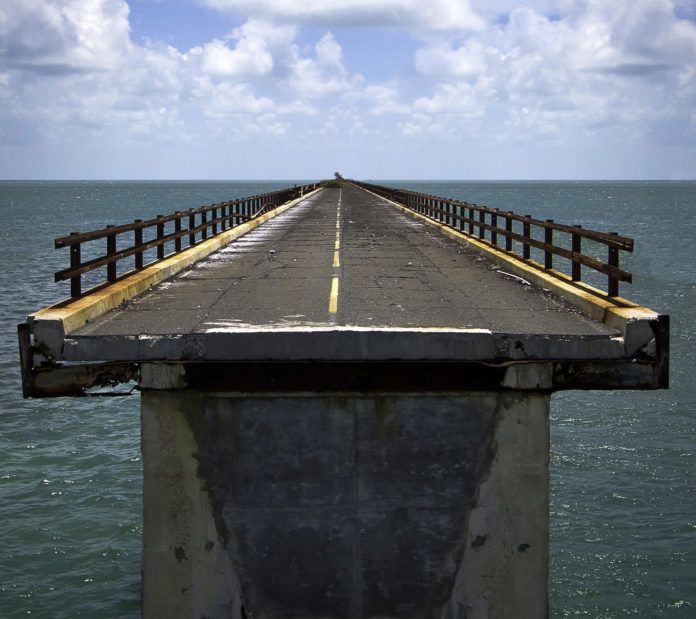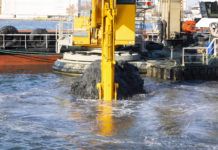The Trump administration unveiled its $1.5 trillion infrastructure plan this spring to a characteristic mix of fanfare and skepticism. Meant to energize investment by state and local governments, as well as private investors, the plan regrettably neglects to identify a path for the federal government to pay its $200 billion portion or address the impending collapse of the Highway Trust Fund.
In light of Trump’s vow not to impact the federal deficit, some worry that Congress will have little choice but to cut programs or find new revenue sources, and are therefore skeptical that the plan will become a reality anytime soon.
Nonetheless, the American Society of Civil Engineers, which recently gave the U.S. infrastructure a dismal D grade in its revered “Infrastructure Scorecard,” deems the plan a good start. In a press release, ASCE President Kristina Swallow says this: “The Trump administration’s plan is a solid first step in having a real conversation about solutions for the nation’s aging infrastructure and a path to address our infrastructure investment deficit.
“Now, it’s time for Congress to develop a bill that can pass with bipartisan support … This bill should increase federal investment, including a long-term, sustainable fix to the Highway Trust Fund.” The Trust Fund receives money from the federal fuel tax of 18.4 cents per gallon on gasoline and 24.4 cents per gallon on diesel fuel but could soon become insolvent without a tax increase or additional funding mechanism.
The Trump plan does not address the trust fund but does offer a variety of programs and incentives for states and regions to generate revenue.
Among them: incentives for reducing timelines and improving performance, providing federal funds for infrastructure investments for populations less than 50,000, and funding high-risk, high-reward infrastructure projects. It also encourages construction training opportunities to meet an expected increase in labor demand from infrastructure investment.
The construction industry is understandably pleased with the plan, since it closely mirrors the “wish list” it presented to the president last year. Speaking in February at the National Associated General Contractors Convention in New Orleans, Jimmy Christianson, vice president of government relations, says numerous AGC recommendations correspond with the plan, including a one-agency, one-decision structure and more streamlined environmental permitting.
“There are a few things in there that we recommended, and we should be blushing because imitation is the greatest form of flattery,” Christianson says.
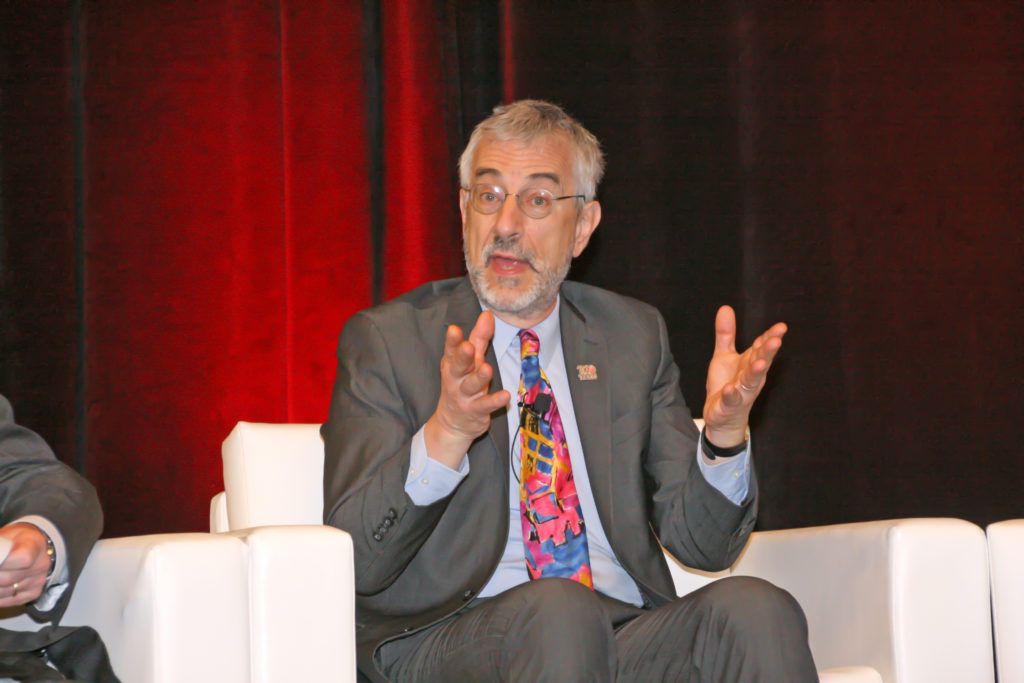
AGC Chief Economist Ken Simonson says the infrastructure package would represent a seismic shift for infrastructure construction in the U.S., but he doesn’t expect to see the benefits for a while. “That could make a huge difference by 2019,” Simonson adds. “Even if Congress were to act fast, which would be pretty startling, it’s going to take until next year to see the funding put into place.”
At the local level, Louisiana DOTD Secretary Shawn Wilson sees the infrastructure plan as long overdue, but worries that its funding mechanisms could be problematic for the state. “The success path in that pot of money has to do with our ability to generate additional nonfederal investment, whether state or local money, or even private money,” Wilson says. “That concerns us, based upon our inability to generate additional dollars through the state gas tax or other initiatives.”
While federal loan programs provide one way to finance projects, Wilson doubts that there would be enough money in the state budget to pay them back.
“I applaud the president. It’s not his problem; it’s Louisiana’s problem,” Wilson says. “We proposed a 17-cent gas tax last session that did not even get a vote in the House of Representatives. It would have produced about $450 million to $500 million a year. To put it in perspective, that would simply have adjusted the tax for inflation had we indexed the gas tax to 1990 dollars.”
Wilson feels a gas tax increase is sensible enough, since the price of materials needed for infrastructure projects—steel, concrete, asphalt, labor, machinery, equipment, design, technology and more—has increased during that same time period.
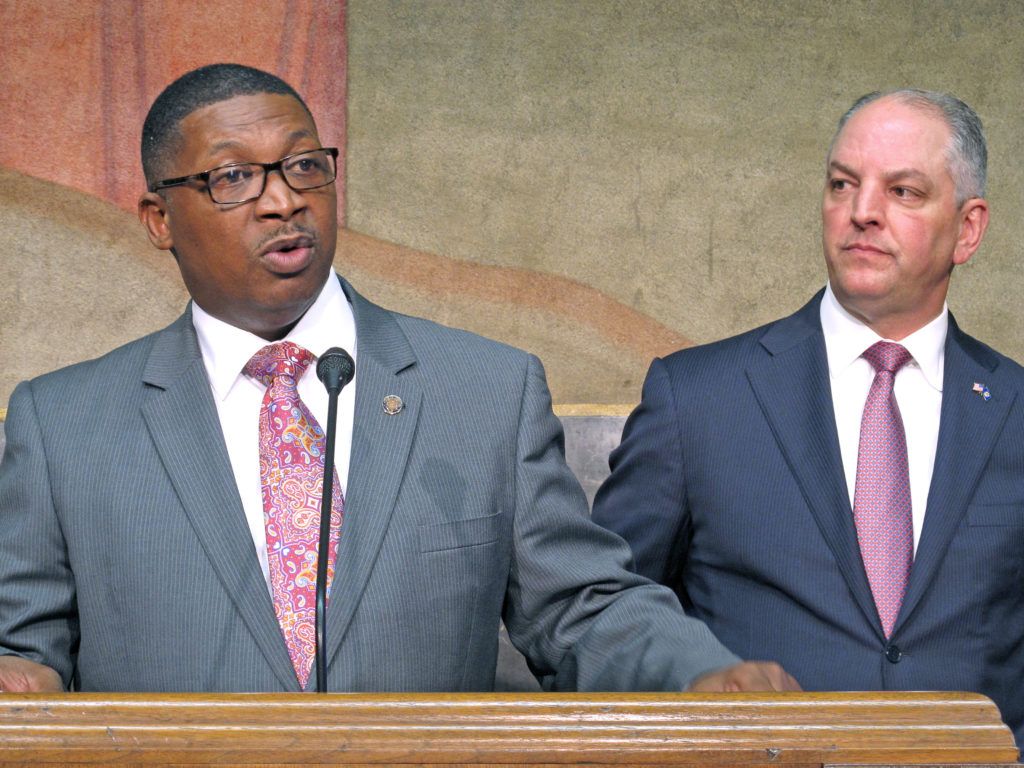
CAPACITY IS KEY
The state’s funding struggles are not good news for an industrial complex that already finds it a challenge to get workers to and from its I-10/I-12 corridor plants. “If you think about the projects that matter most to our industrial community—improving I-10 in Baton Rouge, a new Mississippi River bridge, I-210 and I-10 in Lake Charles—they’re not going to compete well for expansions because their workers can’t get to work,” Wilson says.
“We have to accept the fact that we have zero dollars allocated to capacity,” he adds. “I have enough money today to barely take care of what’s already built, and that amount is shrinking. The pie never gets any bigger; it just gets sliced up into smaller pieces.”
In the meantime, DOTD is looking to Grant Anticipation Revenue Vehicle (GARVEE) bonds as a means to generate revenue. Under the guidelines of the National Highway System Designation Act of 1995, states must repay the bonds using federal funds it expects to receive in the future.
Some are also toying with the idea of raising gas taxes at the city or regional level, since statewide efforts failed. While that’s not allowed in the state constitution, Baton Rouge Rep. Steve Carter is seeking an amendment that would divide the state into regions and allow voters in those regions to decide.
Scott Kirkpatrick, executive director of Capital Region Industry for Sustainable Infrastructure (CRISIS) in Baton Rouge thinks that’s a great idea. “There are some regions in the state that do not have an appetite for additional transportation funding. They feel like they don’t have a problem and have the infrastructure that they need.”

REGIONAL FOCUS: LAKE CHARLES
Despite the tentative hope provided by the Trump plan, current DOTD funding troubles have led to a rather contentious debate over upcoming repairs to the I-210 bridge in Lake Charles. Industry leaders there say the project—which would take the bridge down to one lane in both directions for three years—would seriously impede economic development.
Larry DeRoussel, executive director of the Lake Area Industry Alliance, says the current plan takes a “ridiculous” amount of time and would cripple the area’s petrochemical and gaming industries. He estimates that there are 60,000 vehicles a day crossing the bridge.
“They [DOTD] have to replace the decking. We understand that. But they’re planning on working five days a week, eight hours a day and it’s going to take them three years. It’s going to create enormous delays and create havoc relative to the overtime required at the plants.”
To seek resolution, DeRoussel and others met with Wilson to voice their concerns but made little progress.
Charles Kleckley, former speaker of the Louisiana House of Representatives (R-Lake Charles), says he fears the project could cause businesses and individuals to avoid the area entirely.
The worry is so severe that the Southwest Louisiana Economic Development Alliance authorized an economic impact study to determine the potential effects of the project in terms of jobs and revenue lost.
However, DOTD’s Wilson unflinchingly says little can be done to quicken the project and that postponing it would be far more costly for industry. “If I don’t fix it, what happens if that bridge is completely shut down? You don’t have your folks in congestion for an extra 30 minutes, you have them in congestion for an extra hour.”
He agrees that Lake Charles is in dire need of an infrastructure overhaul, including a new I-10 bridge, but says repairing existing infrastructure is the best option given current economic realities. Joint repairs are already being performed on the I-10 bridge in advance of the I-210 project.
Regional leaders in Lake Charles say they’re somewhat hopeful that the Trump plan could provide long-term fixes to deficiencies on I-10 and I-210, but they’re keeping their optimism in check.
“A lot of this economic development has happened pretty quickly in Lake Charles, and there’s no magic dust or wand that you can sprinkle and turn a two-lane road into a five-lane road, or a three-lane road into four lanes,” Kleckley says.
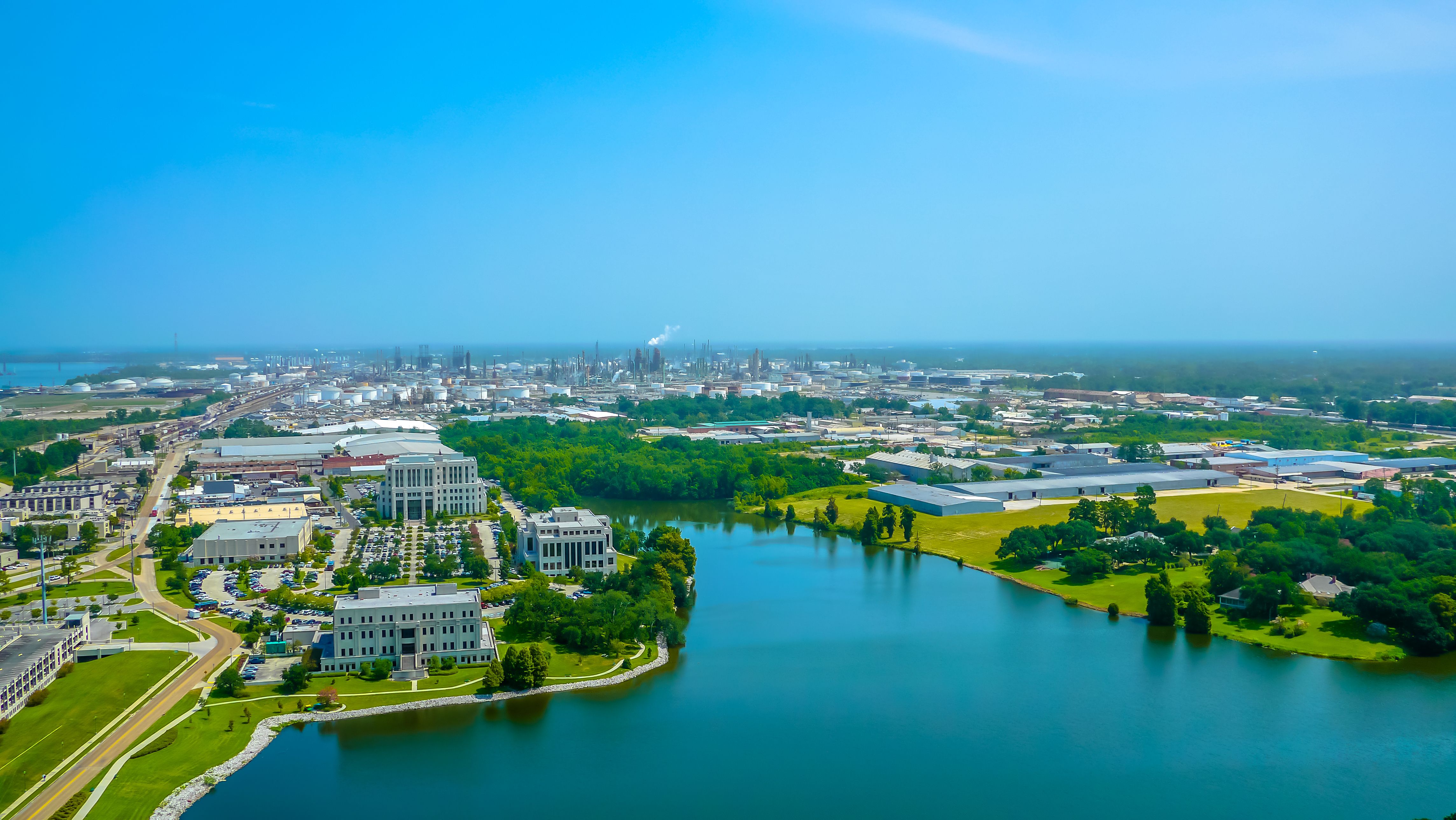
REGIONAL FOCUS: BATON ROUGE
Meanwhile, there is a palpable sense of optimism in Baton Rouge, as DOTD prepares to move forward with plans to perform much-needed capacity expansions to I-10. Officials announced earlier this year that the five-year, $350 million project, which will use federal GARVEE bonds, should start in 2019. DOTD has already begun another $72 million widening project on I-10 between Highland Road and La. 73 in Ascension Parish.
DOTD’s Wilson says the time is now. “If we don’t fix that, in another six to eight years we will be in a perpetual peak travel period through Baton Rouge,” he adds.
Connie Fabré, executive director of the Greater Baton Rouge Industry Alliance, says the I-10 expansions in Baton Rouge and Ascension Parish were determined to be the most “transformational” and cost-efficient and credits CRISIS for identifying key projects and raising awareness.
“CRISIS was the squeaky wheel,” Fabré says. “As part of the effort, we’ve held various meetings with DOTD and we’re basically on the same side. Just the fact that they were able to get the money for the projects is phenomenal.” She also applauds Gov. John Bel Edwards for recognizing the need for the work.
CRISIS’ Kirkpatrick is pleased with the progress, but hesitates to proclaim mission accomplished. He says maintaining public support throughout the expansion will be the next big challenge. That includes working with industry to help minimize traffic through staggered work schedules and carpooling.
This spring, state and regional planning officials unveiled a $1.5 million carpooling initiative to minimize gridlock during the project. Dubbed Commuter Krewe of Louisiana, the three-year initiative encourages drivers to consider ridesharing and other alternatives, as well as encourages employers in the region to participate.
Next up on the CRISIS agenda is a new Mississippi River bridge south of Baton Rouge, along with corresponding improvements to La. 1 and La. 30. At present, DOTD is seeking to identify potential locations for the bridge, but funding sources have not yet been identified.
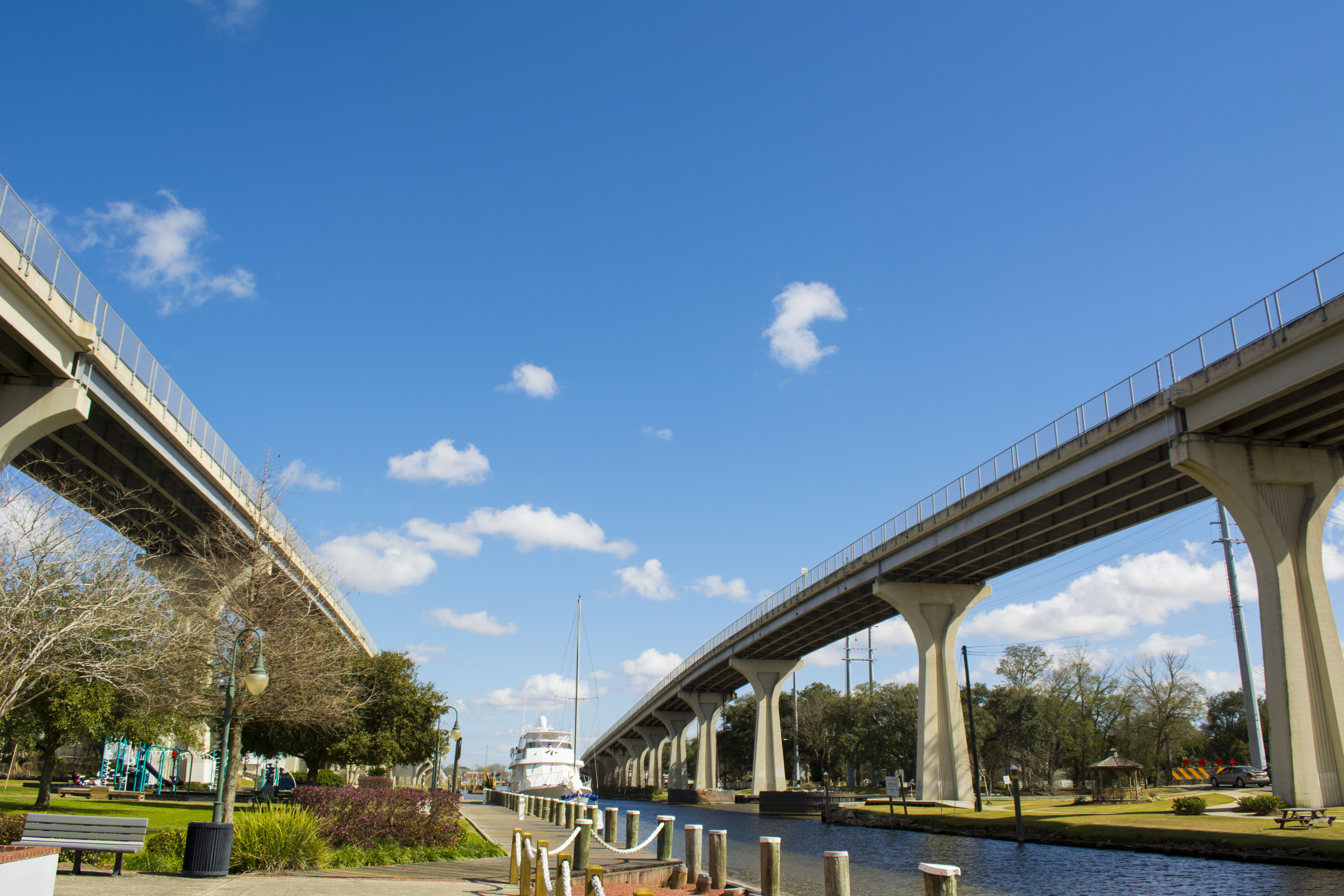
REGIONAL FOCUS: HOUMA/THIBODAUX
In the oil and gas-dependent Houma/Thibodaux region, no infrastructure package is satisfactory unless it addresses a new north-south access route, the completion of the LA 1 Improvement Project and the I-49 extension.
“The area badly needs a north-south corridor access route,” says Vic Lafont, president/CEO of the South Louisiana Economic Council in Thibodaux. “That’s not just for getting goods in and out, but you’ve got to get out of here one way or another in times of man-made or natural disasters.”
The proposed Houma-Thibodaux to LA 3127 Connection would improve north-south system linkage between the Houma-Thibodaux area and the Mississippi River corridor and improve emergency and hurricane evacuation within Louisiana’s bayou region through the establishment of a functional north-south transportation facility.
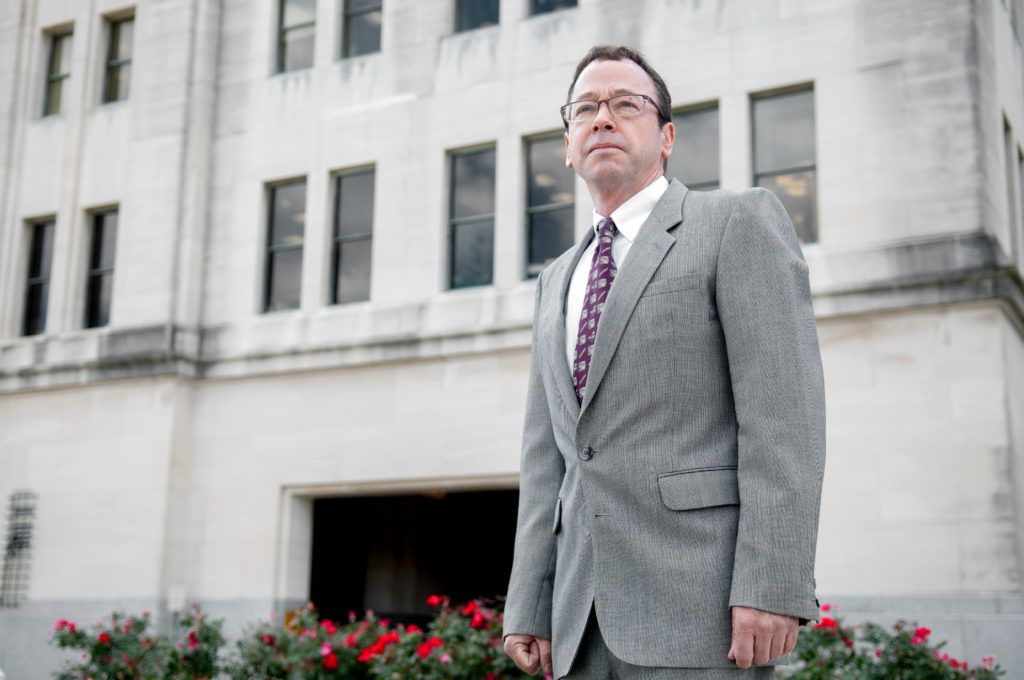
Finishing the elevated sections of the LA 1 Improvement Project is equally important, as it would provide a critical route to Port Fourchon and the Louisiana Offshore Oil Loop (LOOP). Henri Boulet, executive director of the LA 1 Coalition, says the 19-mile project is more than halfway complete, but eight miles of the elevated highway remain to be built. He’s excited about the Trump plan’s Rural Infrastructure Program, which would provide $50 billion in federal funds for capital investments in rural areas with populations of less than 50,000.
“We uniquely qualify for the rural component of the Trump program,” Boulet says. “He acknowledges that rural communities may not have the capacity to provide the same level [of funding] as metropolitan areas, so they won’t necessarily have to meet the same percentage of funding.”
Regardless of the source, Boulet says the La. 1 project could be completed within four years once funding is approved. In May, he’ll learn if the project will receive money from an Infrastructure for Rebuilding America grant, sponsored by the U.S. Department of Transportation.
Unfortunately, the oil and gas industry in the region won’t benefit from the La. 1 project until the highway spans are complete. In the meantime, should the highway be incapacitated by a storm, the impact on the nation’s economy would be catastrophic. A 2011 Department of Homeland Security study found that the U.S. could lose $7.8 billion in gross domestic product in such an event.

REGIONAL FOCUS: GREATER NEW ORLEANS
Tommy Faucheux, incoming chairman of regional economic development group GNO Inc., says infrastructure will be a top priority for the New Orleans area in 2018, including highways, airports and waterways. Faucheux outlined his goals during the group’s annual meeting in March.
“When you think about New Orleans, we have ports and airports, waterways, roadways, railways and pipelines,” he adds. “When they all connect we flourish, and it creates tens of thousands, if not hundreds of thousands of jobs. The airport is going to become increasingly critical to our infrastructure as it continues to grow and becomes more valuable to the entire region.”
Should Trump’s infrastructure package pass, Faucheux says New Orleans and the state should be ready. “There are infrastructure challenges that need our attention. We need to see a long-range plan at the state level to stop the backlog of rural infrastructure projects and start seeing real progress in building the bridges and roads that we desperately need to connect our region.”
Apart from the Trump plan, Port of New Orleans President & CEO Brandy Christian is considerably optimistic about the $1.3 trillion Omnibus Appropriations Bill of 2018 passed in March. “The spending plan offers several positives, including tripling funding for the Transportation Department’s TIGER program, from which Port NOLA received funding for our Mississippi River Intermodal Terminal,” Christian says.
She adds that the funding will support Army Corps of Engineers construction projects, including the long-awaited plans to deepen the ship channel to 50 feet. “The Corps’ plan to deepen the ship channel is critical to the lower Mississippi River port complex in order to reliably handle larger vessels that carry more cargo and generate more revenue,” she says, adding that a critical director’s report on the project is due in May. Once funds are allocated and construction begins, the deepening project is expected to take three to five years.
The Port of New Orleans is upbeat for other reasons, as it expects to capture a significant portion of the growing plastic resin export business. This is due, in part, to its container-on-barge shuttle service, which repositions empty containers from Memphis to Baton Rouge, loads them with plastic resin, then barges them to the Port of New Orleans for overseas export. Experts predict 400,000 TEUs of plastic resin exports from the Gulf through 2020, “and we are ready to meet that market demand,” Christian says.
ALL EYES ON THE HIGHWAY TRUST FUND
Regardless of the Trump infrastructure plan’s success or failure, Highway Trust Fund woes will likely be the fly in the ointment. Government relations specialist Charles Brittingham II issued a dire warning to attendees at the April 9 Cargo Connections Conference in New Orleans, predicting that infrastructure would continue to degrade if Trust Fund mechanisms aren’t corrected. Brittingham is senior vice president of government relations firm Cassidy & Associates in Washington, D.C.
“There just isn’t a robust funding mechanism right now in the gas tax to provide for all of the infrastructure needs that they have,” Brittingham says. “To have a comprehensive infrastructure package, you have to find a mechanism to make our highway program solvent. The Highway Trust Fund in April 2020 will be $130 billion in the red. That means it devolves the program back down to the state. That means bills don’t get paid. It means our highway, road and bridge infrastructure continues to degrade at an exponential rate.”
Depending upon the outcome of the mid-term elections, he is cautiously optimistic that Congress will move to fund the program in 2019. “They have to find a means, but it will not be by raising the gas tax. It’s not politically feasible, so they’ve got to look for other mechanisms.”

